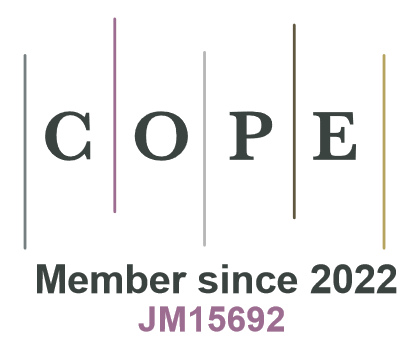Plants on duty – phytotechnologies and phytoremediation at a glance
DOI:
https://doi.org/10.1515/fobio-2015-0004Słowa kluczowe:
ecotechnologies, rehabilitation, remediation, watershed management, pollution controlAbstrakt
W świetle postępującej degradacji środowiska naukowcy i inżynierowie szukają coraz bardziej zaawansowanych metod pozwalających na ochronę, remediację i rekultywację ekosystemów. Obecnie preferowane są rozwiązania holistycznie, biorące pod uwagę nie tylko aspekty środowiskowe, ale również ekonomiczne i społeczne. Fitotechnologie to metody remediacji i zatrzymywania zanieczyszczeń oparte o wykorzystanie roślin, procesów zachodzących w ich tkankach oraz w ryzosferze. Zwiększanie pokrywy roślinnej powiększa pojemność środowiska poprzez filtrację wody, kontrolę cykli biogeochemicznych, a także tworzenie siedlisk i zwiększanie bioróżnorodności. Rośliny mają też pewną wartość estetyczną, dlatego ich wykorzystanie w celu rozwiązywania problemów środowiskowych jest mile widziane przez społeczeństwo. Wśród zalet fitotechnologii należy również wymienić ich koszt, który szacunkowo jest około 10-20% niższy niż analogicznej skuteczności rozwiązanie tradycyjne (Vaněk i inni 2010). Dobór odpowiedniego rozwiązania podyktowany jest celem przedsięwzięcia. Najczęściej wykorzystywane rozwiązania zatrzymujące zanieczyszczenia to stabilizujące pokrywy roślinne i drzewne bariery hydrauliczne. Rozwiązania mające na celu zniszczenie zanieczyszczenia to pokrywy i drzewostany fitoremediacyjne. Część rozwiązań ma potencjał remediacyjny, ale także zatrzymuje zanieczyszczenia, to m.in.: strefy buforowe, adaptowane zbiorniki małej retencji oraz oczyszczalnie hydrofitowe. Wykorzystanie fitotechnologii ograniczone jest stężeniami zanieczyszczeń, których rośliny mogą nie przetrwać oraz warunkami klimatycznymi i sezonowymi, a także koniecznością poświęcenia dużego obszaru pod uprawę. Ponadto zabiegi wykorzystujące rośliny są stosunkowo nowymi rozwiązaniami i jeszcze nie wszystko wiadomo o ich możliwościach i konsekwencjach użycia.
Pobrania
Bibliografia
Assessment, M.E. 2005. Ecosystems and human well-being: Island Press Washington, DC.
Google Scholar
Budyko, M.I. 1986. Plants. In: The Evolution of the Biosphere (M.I. Budyko, ed.), pp. 99–137. Springer Netherlands, Amsterdam.
Google Scholar
Costanzo, A. & Bàrberi, P. 2014. Functional agrobiodiversity and agroecosystem services in sustainable wheat production. A review. Agronomy for Sustainable Development, 34(2): 327–348.
Google Scholar
Danilov-Danil'yan, V.I., Losev, K.S. & Reyf I.E. 2009. In: Sustainable development in relation to the carrying capacity of the biosphere. Sustainable Development and the Limitation of Growth (V.I. Danilov-Danil'yan, K.S. Losev, & Reyf I.E. eds), pp. 187–196. Springer Berlin Heidelberg.
Google Scholar
DuBowy, P.J. 2013. Mississippi River Ecohydrology: Past, present and future. Ecohydrology & Hydrobiology, 13(1): 73–83.
Google Scholar
Ehret, M., Bühle, L., Graß, R., Lamersdorf, N. & Wachendorf, M. 2015. Bioenergy provision by an alley cropping system of grassland and shrub willow hybrids: biomass, fuel characteristics and net energy yields. Agroforestry Systems, 89(2): 365–381.
Google Scholar
Grayson, J., Chapman, M. & Underwood, A. 1999. The assessment of restoration of habitat in urban wetlands. Landscape and Urban planning, 43(4): 227–236.
Google Scholar
IETC U. 2003. Phytotechnologies: A Technical Approach in Environmental Management. UNEP, Web.
Google Scholar
Kirkby, M. 1995. Modelling the links between vegetation and landforms. Geomorphology, 13(1–4): 319–335.
Google Scholar
Marmiroli, N., Marmiroli, M. & Maestri, E. 2006. Phytoremediation and phytotechnologies: A review for the present and the future. In:. Soil and Water Pollution Monitoring, Protection and Remediation (Twardowska, I., Allen, H., Häggblom, M. & Stefaniak, S., eds), pp. 403–416. Springer Netherlands, Amsterdam.
Google Scholar
Philippot, L. Raaijmakers, J.M., Lemanceau, P. & van der Putten, W.H. 2013. Going back to the roots: the microbial ecology of the rhizosphere. Nature Reviews Microbiology, 11(11): 789–799.
Google Scholar
Ryszkowski, L. 1998. Nature friendly farming. Naturopa 86: 9.
Google Scholar
Sinden, J.A. & King, D. 1996. Conservation information: a market incentive to promote environmental quality. Biodiversity and Conservation, 5(7): 943–950.
Google Scholar
Technology I, Team RCP. 2009. Phytotechnology Technical and Regulatory Guidance and Decision Trees, Revised: Interstate Technology & Regulatory Council.
Google Scholar
Thangavel, P. & Sridevi, G. 2014. Environmental Sustainability: Role of Green Technologies: Springer, New Delhi.
Google Scholar
van Beukering, P.J.H., Cesar, H.S.J. & Janssen M.A. 2003. Economic valuation of the Leuser National Park on Sumatra, Indonesia. Ecological Economics, 44(1): 43–62.
Google Scholar
Vaněk, T., Podlipna, R. & Soudek, P. 2010. General Factors Influencing Application of Phytotechnology Techniques. In: Application of Phytotechnologies for Cleanup of Industrial, Agricultural, and Wastewater Contamination (Kulakow, P. & Pidlisnyuk, V., editors), pp. 1–13. Springer Netherlands.
Google Scholar
Whetton, P.H., Fowler, A.M., Haylock & M.R., Pittock, A.B. 1993. Implications of climate change due to the enhanced greenhouse effect on floods and droughts in Australia. Climatic Change, 25(3–4): 289–317.
Google Scholar
Zalewski, M. 2002. Guidelines for the integrated management of the watershed: phytotechnology and ecohydrology: UNEP/Earthprint.
Google Scholar
Zalewski, M. 2011. Ecohydrology for implementation of the EU water framework directive. Proceedings of the ICE-Water Management, 164(8): 375–385.
Google Scholar
Zalewski, M & Wagner-Lotkowska, I. 2004. Integrated watershed mangement: ecohydrology & phytotechnology. Manual. Integrated watershed mangement: ecohydrology & phytotechnology Manual: UNESCO.
Google Scholar
Pobrania
Opublikowane
Jak cytować
Numer
Dział
Licencja

Utwór dostępny jest na licencji Creative Commons Uznanie autorstwa – Użycie niekomercyjne – Bez utworów zależnych 4.0 Międzynarodowe.








